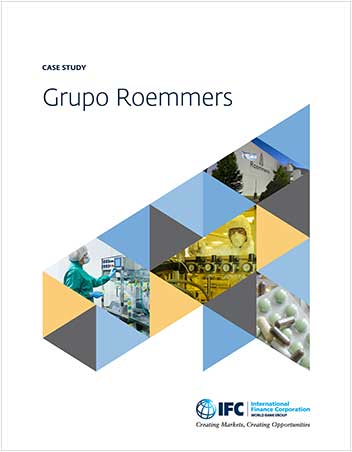There’s something special about companies that last 100 years. Comparatively few large companies do, and very few of those were founded in emerging economies. But last year, Grupo Roemmers, based in Buenos Aires, celebrated its 100th anniversary. This pharmaceutical company limited its business to Argentina until the mid-1970s. Since then, it has grown rapidly throughout Latin America and the Caribbean through a very effective strategy and management style. It sets up separate businesses for each country or local area where it does business. It gives local leaders autonomy to make decisions but engenders a deep commitment to the Roemmers culture and management system. And it sells affordable generic prescription pharmaceuticals with a mix tailored to the aging populations of each local market.
This approach is simple to describe and very difficult to put into practice. But when it is in place, it can lead to an operation of high value, both in financial terms and in the overall impact on the health of its customers. The approach has also made Grupo Roemmers the largest pharmaceutical company in the Argentinian market and the fifth largest doing business in Latin America and the Caribbean (LAC). The other four are Bayer, Sanofi, Novartis and Pfizer. The global pharma companies tend to treat the region largely as a market for branded products developed elsewhere, but Grupo Roemmers centers its research and development (R&D) and manufacturing in the region.
The distinctive Roemmers culture reflects its origins as a family business. It was founded by Alberto J. Roemmers, an immigrant from Lennep, Germany, who brought with him specialized knowledge of laboratory-based manufacturing. Although the family members and foundations are still majority shareholders in this privately held enterprise, the company shifted to more professional management in 2002 after the Argentine economic crisis. It maintained vertical integration, overseeing every phase from R&D to marketing, to keep its prices low. This is particularly important in countries with aging populations, a rising incidence of chronic disease, an ever-growing need for pharmaceuticals, and large numbers of low-income people.
In most of the 16 markets where it operates, Roemmers has expanded by starting or acquiring vibrant local enterprises, which make and sell Roemmers products. In practice, these local firms make most decisions autonomously. The resulting speed and flexibility are especially important in a region where countries have distinct markets and may face volatile political or economic crises at times. The company keeps its far-flung subsidiary leaders close, not through hierarchical oversight but through its culture and leadership values.
You can read about all of these fundamentals of good management in business books. However, it’s a rare company, like Roemmers, that can maintain them in practice, especially when its roots and traditions go back to the early 20th century. This case study includes a closer look at the Roemmers approach in three countries outside Argentina where it maintains manufacturing operations as well as sales. In Mexico, Roemmers acquired the pharma labs of the Swiss Siegfried Rhein company in 1994 and expanded the business from there. In Colombia, where operations began in 2011, the firm built its subsidiary from the ground up. The third country is Brazil, where Roemmers acquired the 69-year-old pharma company Farmoquimica (FQM) in 2001, and built up a thriving pharma business through mergers and acquisitions (M&A) and organic growth.
Lessons
Narrow your enterprise to a core mission, and build out geographically
Establish a common culture and trust regional leaders with decisions
Have them rotate through the business so they can act strategically
Develop speed and skill to navigate uncertainty and crisis


